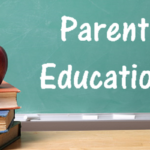Even before any action is taken to reform our public education system, the current efforts being championed by President Obama and administered by Education Secretary Arne Duncan are missing the mark at two fundamental levels and, in doing so, ill serve the needs of all students. First, let’s start with what public education reform really is.
As I argued in a previous post, “public education reform” is really a code phrase for “education for the poor.” Just about all of the reform efforts are devoted to helping struggling schools that are comprised of students who are poor and overwhelmingly minorities and immigrants. Yet that is not how the reform is characterized. The euphemism public education reform is, at best, politically correct and attempts to convey the decidedly democratic message that all children should be treated equally. At worst, this inaccurate language is just plain harmful, causing it to divert us from the real purpose of education reform. Such pretense, regardless of its intentions, creates a house of cards on which current public education reform is built.
If we’re going to solve this massive societal problem, we must start by being honest. Past and current legislation and policy initiatives have been disingenuous. No Child Left Behind made great political theater and established admirable (though thoroughly unrealistic) expectations, but was really just an expensive band-aid for a gaping wound. Race to the Top couldn’t be more poorly named (though Race to Mediocrity is probably too pessimistic to sell); educating children shouldn’t be a competition and aiming for the top, however inspiring it may sound, is setting a bar that, like NCLB, can’t possibly be cleared, at least in the near future. Both attempts at public education reform got us on the wrong road that has kept us from reaching the destination we all want.
Let’s call this public education reform something that is honest and descriptive, say, Removing Obstacles, Creating Opportunities (ROCO): Public Education Reform for Disadvantaged Children. So the goal is now clear: to remove the obstacles and create opportunities that will encourage a decent education for underprivileged kids.
Second, recent education reform initiatives miss the mark on their target population. By trying to impose education reform where it is not needed, we fail to make meaningful changes where it is needed. The fact is that students in affluent school districts don’t need reform; they’re getting a perfectly fine education without our government’s additional “assistance.” In fact, when all of the current efforts at education reform are applied to well-to-do schools, the students end up being hurt rather than helped. School administrators and teachers at affluent schools are handcuffed by rigid teaching standards and intrusive testing requirements. “Teaching to the test” prevents teachers from real teaching and stifles the joy of learning and intrinsic motivation of these students who are already prepared for academic success.
Children in higher-income school districts have every advantage that makes these past (No Child Left Behind) and current (Race to the Top) efforts unnecessary. Their early childhoods are education enriched with involved parents, exposure to reading and other educational activities, and the values, attitudes, and skillsets that are required for academic success. The school districts in higher-income areas also have active foundations that raise substantial sums that go directly to staff salaries and needed resources.
You might think that this approach is unfair because we are not treating our students equally, but equality is not equity. As a commenter on this post on another web site noted, “We would not treat a blind person the same way we treat a sighted one, nor should we treat socially disadvantaged children in the same way as we treat their more privileged peers.”
If we took away the so-called reforms, meaning the standards and testing, would these schools sink into the quagmire of underperformance? Not a chance. The cultures of the school and the communities would simply not permit that to happen. In fact, these schools might actually improve the quality of the education they offer because teachers would be liberated to be creative and innovative in their curricula. The students, in turn, would be more deeply engaged and could pursue learning for its own sake and for their own personal goals.
So can we forget about the schools and the students that don’t need education reform? Without doing so, we are simply wasting energy, time, and money that should be more appropriately directed to children who actually need help. Without doing so, those students most in need get watered-down policies that are meant to appease all students (and constituencies) and don’t strike directly at the heart of the immense barriers that lie in their path.
With our full attention now focused on the target, we will be able to ask the key questions about what the real obstacles are and apply America’s considerable intellectual and innovative weight to finding real solutions to educating disadvantaged children. Simply put, when we are honest about what education reform really is about and who it is for, we might just find a way to accomplish the Everest-like reform goals we have set for ourselves.

